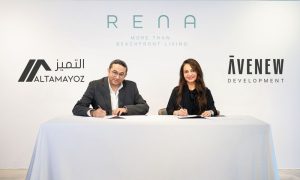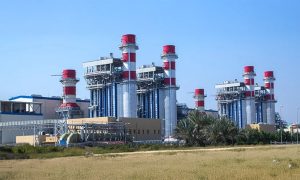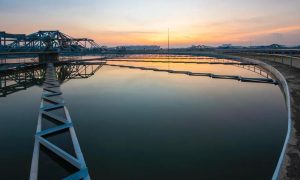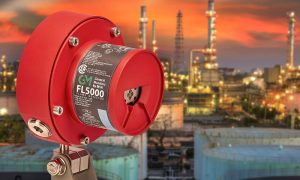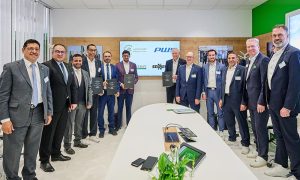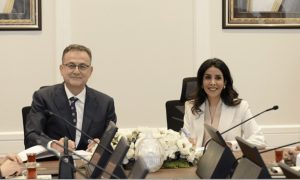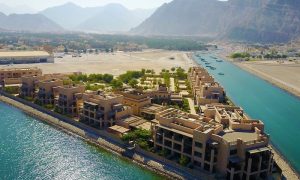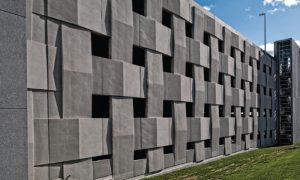Riyadh vision
Huge investments in a long and varied project pipeline are driving the economic diversification of one of the Middle East’s most important cities, Riyadh. Melanie Mingas explores the opportunities and limitations in the capital’s construction market
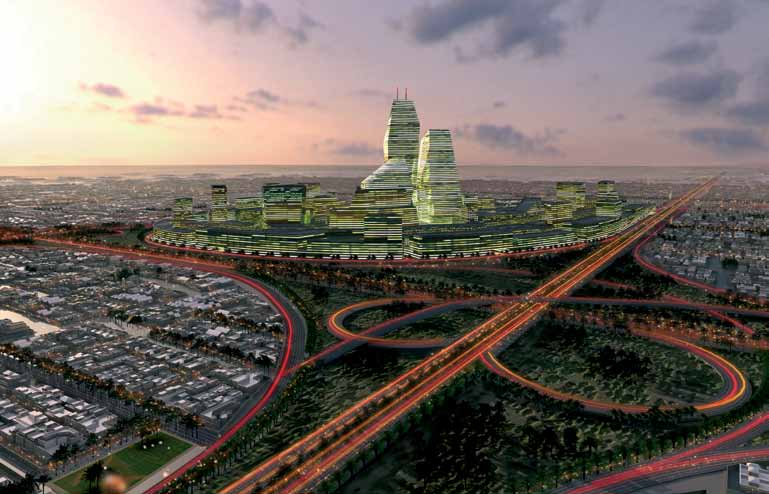
The Arabic name Riyadh translates into English as ‘place of the gardens’, yet the city has grown from an ancient orchard to a 600 square mile urban oasis built on oil. Now more than 1500 years old, Riyadh is divided into 15 districts and has seen its population grow fivefold since 1960.
From the first skyscraper, to the highly-anticipated smart cities and award-winning Kingdom Centre, today’s Riyadh looks every inch the burgeoning business and financial hub.
The city’s success, according to the Riyadh Development Authority (ADA), is due to a combination of its geography, and its strategic and international status, which places it among the most significant capital cities in the world. As a result of this and the country’s key wealth-driving projects, KSA is undoubtedly the place to be for those in the construction industry.
[facts]
Unit Space Delivered
50,000m2
The aount of office unit space that has been delivered to date in 2010 in Riyadh, according to Lang Lasalle KSA
[/facts]
One company making the most of the opportunities in Riyadh is formwork and falsework provider RMD Kwikform. Eyeing a 30% market share, the firm moved into the country only 14 months ago and has already witnessed positive results.
“There is a focus on infrastructure in the east of Saudi Arabia and there are a few mega projects in the west, but the central region seems to have covered the whole spectrum of projects,” says regional manager Peter Gibson.
“The infrastructure segment of the market has developed healthily over the last two years, with a major redesign of Riyadh’s internal road and transport system; mega projects in the infrastructure market show the commitment to upgrading the Kingdom as a whole.”
In addition to housing requirements, the city must meet the major schemes currently underway which will contribute to an additional 1.3 million m2 of office space by 2015 and 2.9 million m2 of retail space to be delivered by 2014.
John Harris, head of Jones International real estate services firm Lang LaSalle KSA comments: “The demand for offices this year is clearly much higher than last year and public-sector agencies are driving this. Multinationals have also made KSA a priority growth market.”
The company’s 2010 report stated that while demand is high, supply is even higher, with 50,000m2 of unit space delivered so far this year.
Riyadh will burst into the cyber-century and beyond when KS A’s first smart city, the Information Technology Communications Complex is completed”
Harris says oversupply in the retail sector led to a “cyclical downturn that was driven largely by oversupply.
“We understand that retailers are experiencing improved trading conditions this year,” continues Harris.
“Perhaps we will see enough confidence to launch new projects in recently-developed suburban districts. We also expect to see continued penetration of mid-market brands into secondary cities.”
Adding to this, a number of road works, water and power plants, residential complexes and education facilities are also underway.
“Generally the trading processes and regulations are accommodating growth and all businesses are looking at new technology and other requirements necessary to enter the market,” explains Gibson.
“Complementing this is the high volume and variety of projects being released here, compared to other regions.”
[facts]
Key investments
-The Riyadh Investment Authority (ADA ) is investing US $3.816 billion in four projects in the capital city:
-Riyadh Light Railway (RLR),
-Al-Uruba and Abu Bakr Al-Siddiq road extensions
-Riyadh Ring Road/West Link
-Expansion of the King Fahd National Library by up to 57,000m²
[/facts]
Building smart
Smart buildings will be high on the agenda at Saudi Build 2010, taking place this month, with investment expected to reach US $39.9 billion by 2018. The term was first coined in 1980’s America by the Institute of Smart Buildings.
Riyadh Exhibitions Company deputy general manager Mohammad Al Hussaini says: “Smart buildings are steadily growing in importance, with the government’s increasing focus on environmental sustainability. The initiation of huge smart projects in the Kingdom was through the support of bodies such as the government’s Public Pensions Agency.
“Demand is driven by factors such as energy efficiency, savings in terms of reduced operating costs and optimised building performance.”
Smart buildings can reduce energy consumption by 30%, emissions and water consumption by 50% and reduce building waste by 90%. Legislation is expected to make the development of these sustainable buildings mandatory by the end of the year. Smart projects already underway include the eight million m2 Prince Nora University and King Abdullah Financial District (KAFD).
In less than three years, Al Hussaini predicts that Riyadh will “burst into the cybercentury and beyond” when Saudi Arabia’s first smart city, the Information Technology Communications Complex (ITCC), is finally completed.
Following in the footsteps of Dubai’s Internet City and smart cities in India and Malta, the $1.65 billion development will be an ITCC hub. Phase one of the project involved contracts awarded to deliver four 20-storey towers, a 326 room hotel, 5000m2 convention centre and a sprawling residential complex.
Due to open soon, the 21-storey Waseel tower will be the first green office building in Riyadh; allowing tenants to independently control heat and light, and featuring motion sensors to detect empty rooms; it is expected that 30% of operation costs could be saved.
Speaking of the opportunities smart buildings bring, Al Hussaini says: “Sustainable energy and the increased awareness of environmental issues have consistently attracted investors, developers, contractors and designers in recent years.
“Despite the relatively-high cost of these buildings at present, green and smart buildings will become affordable in the near future with the ongoing research and studies on economic feasibility.
This in turn will create more demand for smart buildings, thus opening new avenues for developers and investors and the constructionrelated industry as a whole.”
A mega economy
[facts]
16.8%
Built-up land in Riyadh
Source: ADA March 2010
The study indicated that the built area of land in Riyadh, particularly in the north of the city, had reached 176km2 – up 16.8% compared to 2005
[/facts]
Riyadh’s flagship projects are its economic cities; created under the 10×10 vision for economic diversification, they also demonstrate the government’s commitment to secure KSA’s place as a top 10 world economy.
The King Abdullah Financial District will host the Capital Market Authority headquarters, Stock Exchange, banks and financial institutions, becoming an ideal trading base for accountants, lawyers, consultants, and IT providers, among others.
Pioneered by the Rayadah Investment Company and covering 1.6 million m2, it will be the first financial district in the region, with the regulatory and technological standards seen in other global financial centres.
FX Fowle has three buildings under design and seven under construction in KAFD. Commenting on KAFD’s relevance, managing director Edward Mayer says: “Riyadh is a very old and underdeveloped city. It has been expanding exponentially over the past 80 years but there has always been a minimal amount of construction and new, large developments to put it into the modern market.”
Sudair City will be the largest development of its kind in the region, accommodating more than 600 industrial projects and providing 40,000 job opportunities”
Explaining how technological developments in the rest of the world have driven ambition he adds: “Now there is a desire firstly to become a larger player in the world market, which started with the Organisation of Petroleum Exporting Countries, but is diversifying as oil runs out. Secondly there is a need and a desire to expand the infrastructure as well as the design of the buildings.”
Drawing on the similarities in Turkey and India, he continues: “There are so many young people coming who need education and independent housing, it has created this market all by itself, which is the easiest and best way for any country to stimulate its economy, and it’s a sustainable market.”
Before KAFD is delivered, it will be eclipsed by Sudair City, a $40 billion 265 million m2 industrial city in the Nejd region, north of Riyadh. Due in 2015 and spearheaded by the Saudi Industrial Property Authority, Sudair City will be the largest development of its kind in the region, accommodating more than 600 industrial projects and providing 40,000 job opportunities.
Construction will include development of industrial land, a power plant, highways, drainage systems, a dry port and an industrial research centre. The project will also bring a variety of investment opportunities in the industrial, residential, commercial and service sectors.
“These projects will draw the concentration of the populace out of the already congested centres, creating a more even spread of developments throughout the Kingdom and helping to bring employment, revenue opportunities and stability to the selected areas,” says Gibson.
Powering the Kingdom
Despite the glitz, Riyadh is still working on the basics, from roads to running water.
The population is increasing on average by 2% year-on-year with half of the population aged 20 years old or under, and according to an ADA study conducted in early 2010, the area of built-up land has increased 16.8% since 2005. Yet transport, power and utility networks lag behind.
“There is no point having world-class development without the infrastructure and currently it is not at the same level as the plans. Riyadh needs to take a more holistic approach to development, looking at the area as one whole project,” says Cityscape group director Deep Marwaha.
A transport network, new road systems, a monorail, underground train system on the King Abdullah Road extension and a proposed railway station for commuters, are planned for the coming decade.
Investment in a new 3900km railway system has now reached $25 billion and will include the North South Railway which joins the northern mineral belt with Riyadh and the industrial city of Jubail.
Rail is a vital form of transport for connectivity and trade across a vast and inhospitable environment; major projects funded by publicprivate partnerships include the Haramain high-speed rail line, the Land Bridge project and the North-South line.
[facts]
Railway Investements
$25b
The amount invested so far in a new 3900km Riyadh rail system and network, which includes the North South Railway
[/facts]
As the largest producer of desalinated water, the Kingdom of Saudi Arabia has 30 plants on the Red Sea and Arabian Gulf producing 3.6 million m3 of water per day.
Despite a SAR 1.3 billion investment to date, KSA has the highest per capita water consumption in the world and even more investment will be needed over the next decade.
Khaled Daou, project manager of Saudi Water Technology at Riyadh Exhibitions Company says: “The Kingdom currently depends on desalination for 70% of its water requirements and the rest comes from around 230 dams and hundreds of wells so the water and power sectors require at least SAR one trillion in investments to 2025.”
Latest forecasts show that nine desalination projects are to be implemented within a few years, according to the Saline Water Conservation Corporation (SWCC).
Additionally the government is launching conservation campaigns and is actively encouraging the private sector to take the lead in establishing and managing purification and desalination plants.
Khaled Daou, project manager of Saudi Water Technology says the water and power sectors require at least SAR one trillion in investments by 2025
Furthermore, acceleration in the realestate sector is creating an economy of its own, with furniture, landscaping and electronics companies all reporting increased trade. Cityscape Riyadh saw huge demand for space at the show, with more than 50 realestate exhibitors.
The Cityscape team says housing remains one of Riyadh’s primary property segments with prices due to increase by up to 10% by the year end.
Marwaha adds: “There are vacant plots in the centre because of land prices that, compared to Jeddah, are four times higher, which is hugely disparaging.
“In time, I expect that the pace of residential and retail developments will have a positive effect due to a greater supply, so prices will fall.”
But he says “the best opportunity is by far in residential development,” echoing the need to couple these projects with continued infrastructure investment.
The current focus is Vision 2020, which is an aspiration to cultivate small to mediumsized enterprises, diversify the economy, expand public services and streamline the public sector.
If Riyadh proves it can deliver on the basics, its post-oil future could be even more lucrative than expected.
